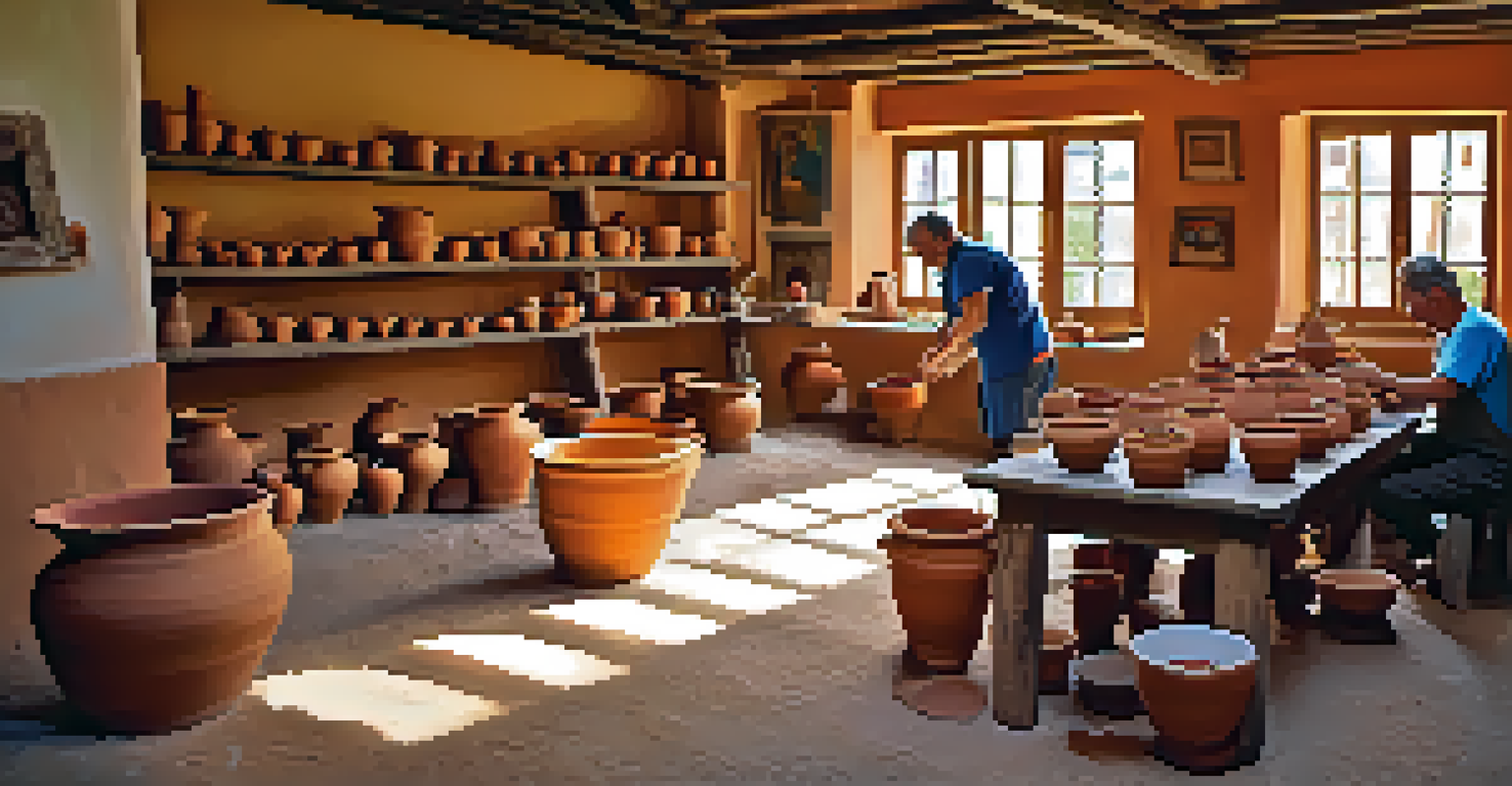Cultural Eco-Tourism: Spain's Sustainable Heritage Sites

Understanding Cultural Eco-Tourism in Spain
Cultural eco-tourism blends travel with conservation, allowing visitors to explore Spain's rich heritage while preserving it. This approach not only showcases local traditions and landscapes but also promotes responsible travel practices. Tourists are encouraged to engage with local communities, ensuring that their visits benefit both the environment and the economy.
Traveling – it leaves you speechless, then turns you into a storyteller.
In Spain, cultural eco-tourism is particularly focused on areas like rural villages, national parks, and historical sites. Here, visitors can learn about the unique customs and traditions that have shaped the region. By participating in local events, such as festivals or artisan workshops, travelers gain a deeper understanding of the cultural significance behind the places they visit.
Moreover, sustainable practices are emphasized, such as using renewable energy, reducing waste, and supporting local businesses. This ensures that tourism contributes positively to the environment and helps maintain Spain's diverse cultural heritage for future generations.
Key Heritage Sites Promoting Sustainability
Spain is home to several heritage sites that exemplify cultural eco-tourism. The Alhambra in Granada, for example, not only showcases stunning Moorish architecture but also implements eco-friendly initiatives to preserve its gardens and water systems. Visitors can explore the site while learning about its historical significance and the importance of conservation efforts.

Another remarkable site is the historic town of Ronda, perched on cliffs and surrounded by breathtaking landscapes. Here, eco-tourists can enjoy hiking trails that offer views of the countryside while discovering the local flora and fauna. The town promotes sustainable practices by encouraging visitors to support local artisans and products.
Cultural Eco-Tourism Benefits Local Communities
Cultural eco-tourism encourages travelers to engage with local cultures, providing economic support and fostering meaningful connections.
Additionally, the Camino de Santiago, a famous pilgrimage route, invites travelers to connect with nature and history. As pilgrims walk through picturesque villages and stunning landscapes, they also contribute to the local economy and raise awareness about the importance of preserving Spain’s cultural heritage.
Engaging with Local Cultures and Communities
One of the most rewarding aspects of cultural eco-tourism is the opportunity to engage with local communities. In many regions of Spain, travelers can participate in workshops led by artisans, learning traditional crafts such as pottery or weaving. This not only fosters a deeper appreciation for local culture but also provides economic support to these artisans.
Take only memories, leave only footprints.
Participating in community-led tours can also offer insights into the daily lives of locals. For instance, visitors in Andalusia might join a family for a traditional cooking class, preparing dishes that have been passed down through generations. Such experiences create meaningful connections between tourists and residents, enriching the travel experience.
Furthermore, community involvement ensures that tourism development aligns with local values and needs. By prioritizing local voices in decision-making processes, cultural eco-tourism helps maintain the authenticity of experiences while promoting sustainable practices.
The Role of Conservation in Eco-Tourism
Conservation plays a pivotal role in cultural eco-tourism, as it aims to protect the natural and cultural resources that attract visitors. In Spain, various organizations work tirelessly to preserve biodiversity and historical sites, creating a balance between tourism and conservation. This ensures that visitors can enjoy these sites without compromising their integrity.
For example, in the Picos de Europa National Park, conservation efforts focus on maintaining the delicate ecosystems while promoting eco-friendly activities like hiking and birdwatching. These initiatives not only safeguard the environment but also educate visitors about the importance of preserving such natural wonders.
Conservation is Key to Sustainable Travel
Effective conservation efforts are essential to protect Spain's natural and cultural resources while allowing tourists to enjoy them.
Moreover, responsible tourism practices, such as minimizing carbon footprints and respecting local wildlife, play a crucial role in conservation efforts. By adopting these practices, tourists can contribute to the sustainability of the sites they visit, leaving them better than they found them.
Benefits of Cultural Eco-Tourism for Travelers
Cultural eco-tourism offers numerous benefits for travelers seeking enriching experiences. Beyond simply visiting a destination, participants can immerse themselves in local cultures, gaining unique insights that typical tourism might overlook. This deeper connection often leads to more memorable and impactful travel experiences.
Additionally, eco-tourism often encourages healthier travel choices. Many cultural eco-tourism activities, such as hiking, biking, or participating in outdoor adventures, promote physical well-being while allowing travelers to enjoy nature. This focus on health and wellness is becoming increasingly popular among tourists.
Finally, travelers can take pride in knowing their visits support sustainable practices and local communities. By choosing eco-friendly options, they contribute to a positive impact on the environment and help preserve Spain's cultural heritage for future generations.
Challenges Facing Cultural Eco-Tourism in Spain
Despite its many advantages, cultural eco-tourism in Spain faces several challenges. One significant issue is the balance between increasing tourist numbers and preserving the integrity of heritage sites. Overcrowding can lead to environmental degradation and diminish the authentic experience that eco-tourism promises.
Additionally, there can be a lack of awareness among both tourists and local communities about sustainable practices. Many travelers may not fully understand the impact of their actions, leading to unintended consequences for the environment. Education and outreach efforts are crucial to address this gap.
Challenges Threaten Eco-Tourism Growth
Overcrowding, lack of awareness, and limited funding pose significant challenges to the sustainability and integrity of cultural eco-tourism in Spain.
Furthermore, funding and resources for conservation projects can be limited, making it difficult to implement and maintain sustainable initiatives. Collaboration between government bodies, NGOs, and local communities is essential to overcome these challenges and ensure that cultural eco-tourism flourishes.
The Future of Cultural Eco-Tourism in Spain
The future of cultural eco-tourism in Spain looks promising, with a growing emphasis on sustainability and responsible travel. As more travelers seek meaningful experiences that align with their values, destinations are adapting to these demands. This shift creates opportunities for innovative eco-tourism practices that prioritize both cultural preservation and environmental stewardship.
Moreover, advancements in technology can play a role in enhancing eco-tourism experiences. For instance, virtual reality and mobile apps can offer educational content about heritage sites, allowing travelers to engage with the history and culture before their visit. This can deepen their appreciation and respect for these treasures.

Ultimately, the future of cultural eco-tourism hinges on collaboration among stakeholders, including tourists, local communities, and conservation organizations. By working together, they can create a sustainable model that not only benefits the economy but also preserves Spain’s rich cultural heritage for generations to come.